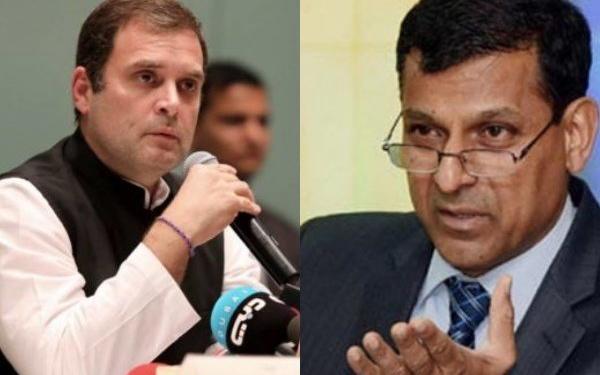According to media reports, former RBI governor Raghuram Rajan has authored a detailed report on the state of employment in India which is to be included as part of the Congress vision document ahead of the 2019 elections. Raghuram Rajan is also a part of the committee responsible for drafting the manifesto of the Congress party for the upcoming general election. In the recent turn of events, it is just the matter of time that the former governor joins the Grand Old Party.
In fact, Raghuram Rajan has been a close aide of the Congress party since the beginning. Prior to being appointed as the governor of the Reserve Bank of India (RBI), Rajan served as the chief economic advisor of the Congress party during UPA-II era, from August 2012 to September 2013. According to Congress sources, it was Rajan, who suggested Rahul Gandhi to form the Lok Sabha election manifesto around two issues including employment generation and agricultural.
Lately, Raghuram Ragan has been a critic of Modi government’s economic policies besides holding the office as RBI governor. His tenure finally ends in 2016 and since then he openly bashed the economic reforms of the BJP government. Earlier, talking about the GST and Demonetization, former RBI governor called it a ‘hard blow’ and a ‘shock’ to the economy and added, “What happened in 2017 is that even as the world picked up, India went down. That reflects the fact that these blows (demonetization and GST) have really, really been hard blows… Because of these headwinds, we have been held back…” He further added, “The two successive shocks of demonetization and GST had a serious impact on growth in India. Growth has fallen off interestingly at a time when growth in the global economy has been peaking up…”
Raghuram Rajan is among the most respected economists and public intellectuals around the globe and comparing GST with demonetization does not suit his expertise. While demonetization has its critics and admirers, there is a consensus among policymakers and economists that GST was a monumental economic reform. Criticism of GST from an economist of Rajan’s stature is definitely more of ideological bias towards a particular government than a dispassionate analysis of the issue.
Interestingly, the former RBI governor is also under the scanner of investigating agencies for the 80:20 gold import scheme started during UPA-II era. The scheme was started in August 2013; aiming to curb gold imports in the country. The macroeconomic indicators, especially the Current Account Deficit (imports over exports) were widening and the rupee was going down. So, the government brought 80:20 scheme to curb gold import. But later, in CAG report, major irregularities in the scheme were found and the scheme went on to benefit jewelers like Nirav Modi and Mehul Choksi, the main accused in the 13000 crore PNB fraud case.
Further, the scheme was reviewed by the Modi government and many discrepancies were found in it. So the government requested RBI to scrap the scheme to which RBI followed in November 2014. “Accordingly, all instructions issued about the scheme from time to time starting with circular number 25 dated August 14, 2013, stand withdrawn with immediate effect,” the RBI said.
Rajan’s apparent stand with the Congress explains his bias against the Modi government. Perhaps this comes as no surprise but it certainly raises questions on his constant bickering during his tenure as the RBI governor in Modi government. This also explains why the government had to let go a very political governor who was at odds with the policy agenda of the dispensation he was serving in.


































